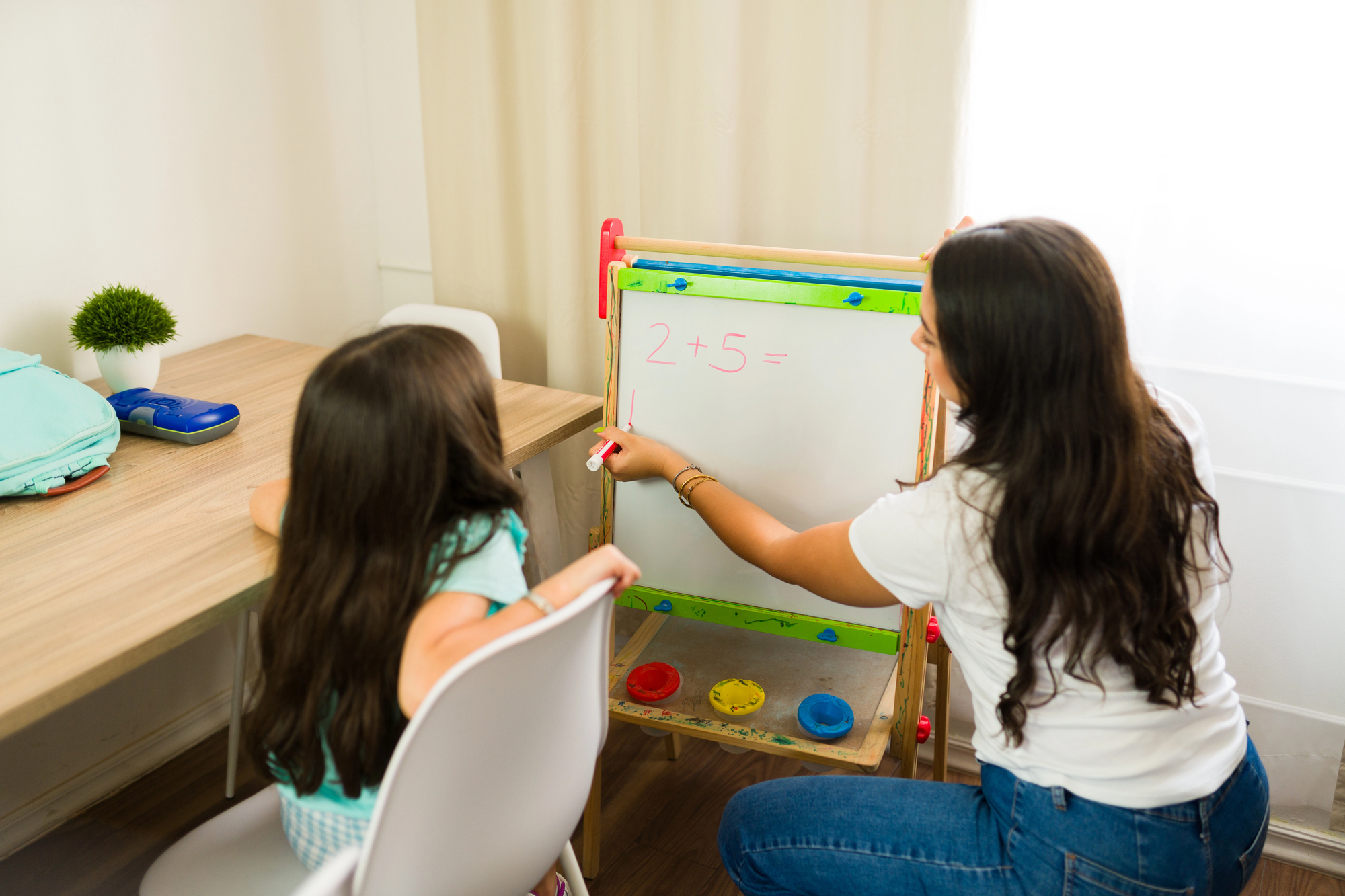Effective Daily Homeschool Schedule
Life Photo / 1 March 2025

How To Create a Productive Homeschool Schedule
Homeschooling gives families the freedom to shape education around a child’s strengths and interests. However, without a clear plan, it’s easy for things to become unorganized and chaotic. A well-thought-out schedule provides structure, helping students stay engaged and develop essential time-management skills. When lessons, independent study, and downtime are balanced effectively, children can grow academically and personally in a stress-free environment.
This article explores the benefits of a structured homeschooling routine as well as practical ways to create a schedule that works for different learning styles and goals.
How a Homeschooling Schedule Benefits Students
A solid homeschool routine can help keep lessons organized and build essential life skills. Children develop discipline, learn to manage time wisely, and become more self-motivated. When they know what to expect each day, they naturally gain a sense of responsibility and accountability. These habits lay the foundation for future academic success and personal growth.
A predictable routine also eases stress. Students who understand their daily expectations can focus on learning without the anxiety of uncertainty or last-minute cramming. Instead of feeling overwhelmed, they build confidence in their ability to keep up with their studies.
Beyond academic success, structured schedules support emotional and mental well-being. Predictability provides a sense of security, reducing frustration and anxiety often linked to unstructured learning environments. It also helps students transition smoothly between different subjects and activities, making staying focused and engaged throughout the day easier.
Ways To Create a Productive Homeschool Timetable
There’s no universal approach to homeschooling. Each child learns differently, so finding the right schedule often involves trial and adjustment. Flexibility is essential for maintaining consistency while making room for modifications that ensure the routine stays effective and engaging.
Here are some practical strategies to create a well-balanced and productive homeschool timetable.
Define Your Educational Goals
Before structuring the day, it helps to have clear educational priorities. Identifying what students need to accomplish — whether mastering core subjects, preparing for exams, or nurturing creative talents — directs the schedule and ensures lessons stay focused.
One effective way to define these goals is by using school planners since they simplify organization, making it easier for parents and students to track progress and stay on course with academic goals.
Setting both short-term and long-term academic goals allows for a more customized approach. Short-term goals may include weekly reading assignments or completing a math module. At the same time, long-term objectives focus on broader educational milestones, such as finishing a curriculum level or mastering a foreign language.
Structure Your Daily Schedule
A structured but adaptable routine fosters a productive learning environment. It should include core subjects, short breaks to refresh the mind, and designated time for extracurriculars like art, music, or exercise.
A customized calendar offers a visual guide to daily activities, keeping schedules organized and ensuring a balanced mix of subjects and activities throughout the week.
Establishing specific start and end times for different subjects brings a sense of normalcy to the day. Adjusting these time blocks based on how well a student engages with each topic prevents fatigue while ensuring that key lessons receive attention.
Incorporating buffer time between subjects can also improve the flow of the day. This prevents students from feeling rushed and provides opportunities for spontaneous learning experiences, such as discussing an interesting topic in-depth or exploring an unexpected area of interest.
Incorporate Varied Learning Activities
Keeping students engaged means avoiding monotony. A mix of activities prevents boredom and makes lessons more impactful. Hands-on projects, interactive exercises, outdoor exploration, and creative assignments offer variety and reinforce learning in dynamic ways.
For example, integrating science experiments, storytelling, or nature-based learning enhances traditional lessons. Exposure to different teaching styles encourages curiosity and deeper understanding. Joining study groups or collaborating with other homeschooling families also strengthens social skills and critical thinking.
Encouraging student-led learning projects can further personalize education. Allowing students to choose a topic of interest and conduct their own research fosters a sense of ownership and enthusiasm for learning.
Utilize Effective Planning Tools
Keeping track of assignments and lesson plans prevents disorganization and missed topics. A student planner helps lay out weekly subjects and deadlines, ensuring lessons stay on track.
In addition to physical planners, digital scheduling tools provide reminders and customizable features that allow families to fine-tune their approach and stay aligned with their educational goals.
Using color-coded systems or subject-specific folders can also make organizing lesson plans easier. Students can quickly locate materials and stay on top of assignments, without unnecessary distractions, when each subject has a designated space.
Track Progress and Adjust as Needed
Regular check-ins help identify strengths and areas needing improvement. Keeping a journal allows students to reflect on their learning journey, track their progress, and recognize achievements.
Quizzes, discussions, and informal assessments offer insights into which teaching methods work best, making it easier to refine the schedule and address any learning gaps before they become bigger issues.
Parents and educators can also use progress-tracking charts or weekly review meetings to ensure students meet their goals. These reflective practices encourage accountability and reinforce continuous improvement.
Foster Independence and Responsibility
Giving children ownership of their learning builds confidence and self-discipline. Assigning them responsibilities like organizing their materials, managing their schedule, and setting personal learning targets encourages independence.
A calendar makes tracking assignments and due dates easier, helping students take responsibility for their workload while learning valuable time-management skills. It also empowers students to think ahead and start long-term projects that span several weeks or months.
Providing opportunities for students to set their own learning goals fosters a sense of control over their education. Whether selecting a book to read, planning a science experiment, or designing a creative project, having choices empowers students and strengthens their problem-solving abilities.
Create a Positive Learning Environment
The correct setting dramatically affects a child’s ability to focus. A quiet, distraction-free space improves concentration and makes studying more effective. Decorating the area with educational materials, inspirational quotes, or interactive charts adds personality and motivation to the learning experience.
Comfort also plays a crucial role in the learning environment. A good chair, proper lighting, and a clutter-free desk contribute to a more productive and enjoyable study space. Visual aids like whiteboards or daily planners help students stay aware of their tasks and upcoming lessons.
Creating a space that accommodates different learning styles can further enhance engagement. Some students thrive with visual cues, while others prefer audio-based lessons or hands-on activities. Incorporating flexible seating, standing desks, or cozy reading corners ensures a comfortable and stimulating learning experience.
Celebrate Achievements and Milestones
Recognizing accomplishments, no matter how small, builds motivation. Completing a difficult assignment, mastering a new concept, or finishing a semester should be acknowledged and celebrated.
Using a planner to document milestones allows students to reflect on their progress and take pride in their efforts. Small rewards, like choosing a favorite activity or enjoying a special day off, reinforce the value of dedication and perseverance.
Homeschooling creates the opportunity for a customized learning experience that nurtures a child’s unique strengths and interests. A well-structured schedule drives academic success, fosters essential life skills, builds independence, and cultivates a love for learning. With a thoughtful balance of organization, adaptability, and the right tools, homeschooling becomes a fulfilling and enriching journey for students and parents.


